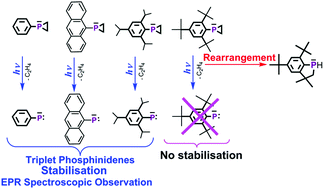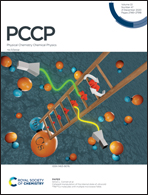Generation and direct EPR spectroscopic observation of triplet arylphosphinidenes: stabilisation versus internal rearrangements†
Abstract
Triplet phosphinidenes, which have been postulated as important intermediates in numerous organophosphorus reactions, have been previously directly observed only in isolated cases. Recently we have published the first recorded EPR spectrum of triplet phosphinidene–mesitylphosphinidene (A. V. Akimov et al., Angew. Chem., Int. Ed., 2017, 56, 7944). In the present study we considered a series of triplet arylphosphinidenes which have been stabilised and detected for the first time using EPR spectroscopy by photolysis of 1-arylphosphiranes ArPC2H4 (Ar = C6H5, 9-anthracenyl, and 2,4,6-iPr3C6H2) in solid methylcyclohexane. We paid special attention to their magnetic parameters and the conditions of their stabilization during the photolytic cleavage of arylphosphiranes. An unusual influence of o-substituents on the spin–orbit component of the ZFS parameters D is observed. Surprisingly, photolysis of bulky arylphosphirane Mes*PC2H4 (Mes* = 2,4,6-ButC6H2) results in no formation of the stabilized triplet phosphinidene under similar experimental conditions. The performed quantum chemical calculations showed that the highly unstable singlet phosphinidene Mes*P undergoes an almost barrier-free rearrangement affording a stable insertion product, thereby hindering the conversion of the singlet intermediate to a more stable triplet phosphinidene.

- This article is part of the themed collection: 2020 PCCP HOT Articles


 Please wait while we load your content...
Please wait while we load your content...